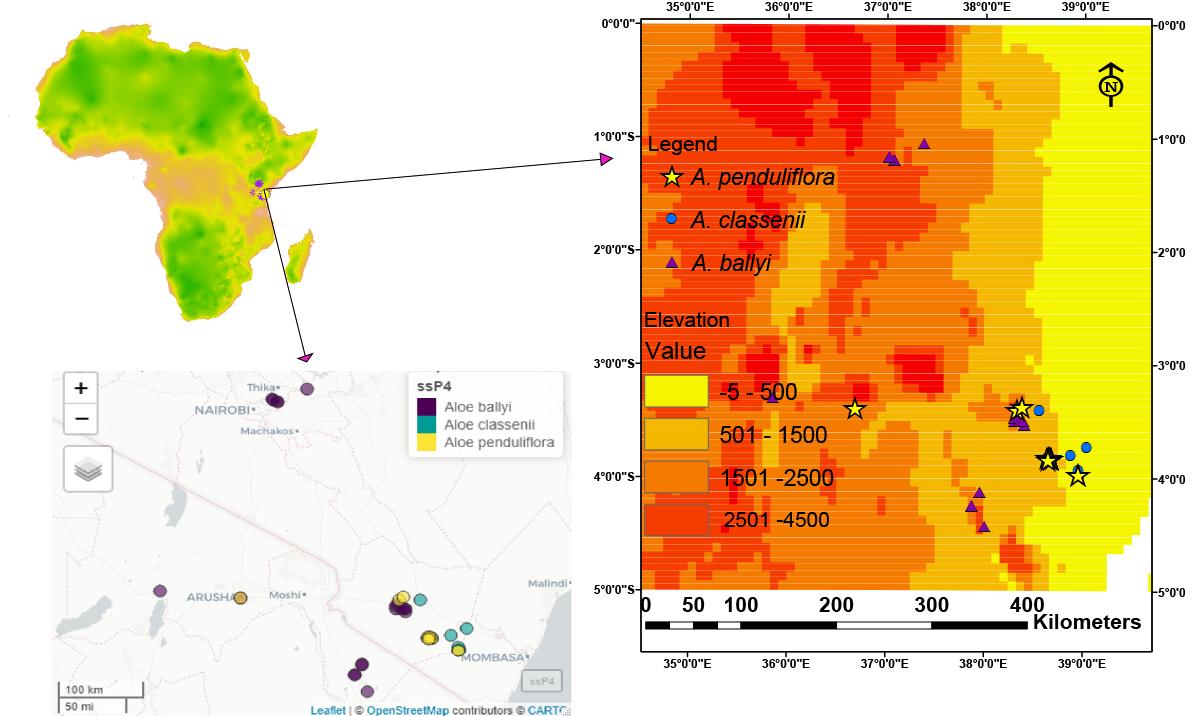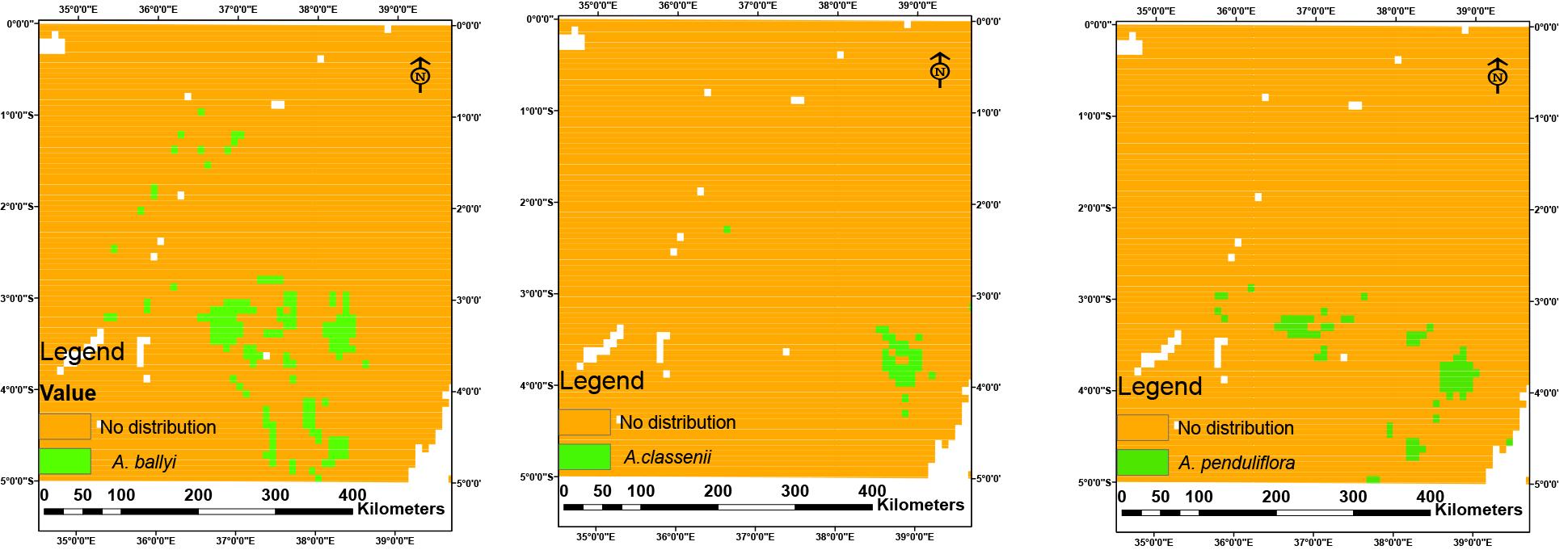Climate change poses major threats to the survival of plant species, especially those with restricted distribution. Understanding how climate change affects endemic species is critical for conservation efforts. Aloe L. is the leading genus in the Asphodelaceae family with 548 accepted species. About 63 Aloe species occur in Kenya, of which around 50 % are endemic and 48 species are recognized in Tanzania.
There are fewer than 16 species of Aloe species listed as "critically endangered," "endangered" or "vulnerable" by the Red List of the International Union for Conservation of Nature. However, no conservation management plans have yet been developed.
Using niche modeling, researchers from the Wuhan Botanical Garden of the Chinese Academy of Sciences analyzed the impacts of climate change on the potential distribution of three endemic Aloe species (Aloe ballyi Reynolds, Aloe classenii Reynolds, and Aloe penduliflora Baker) critically endangered in East Africa in the future (the years 2050 and 2070).
Two representative concentration pathways scenarios were used to project the contraction of suitable habitats for the species.
According to the researchers, environmental and bioclimatic variables (potential evapotranspiration, soil sedimentary rocks, temperature and precipitation) had a great impact on the distribution of the three Aloe species. The potential suitable habitats for A.ballyi and A. penduliflora are limited to the coastal region of Kenya and some regions in Tanzania, whereas habitat for A. classenii is limited to a small region in the coastal region of kenya.
Despite the expected expansion of A. penduliflora habitat, the existing distribution of suitable habitat for all three species is expected to shrink. The original habitats of A. ballyi and A. classenii are projected to shrink by 44% and 34% in the two representative concentration pathways scenarios.
These models indicate that climate change may lead to the loss of a large area of current Aloe habitat, highlighting the need of attention to the conservation of Aloe in Kenya.
Results entitled "Modeling Impacts of Climate Change on the Potential Distribution of Three Endemic Aloe Species Critically Endangered in East Africa" were published in Ecological Informatics.









